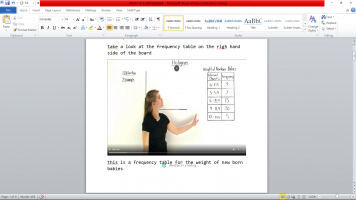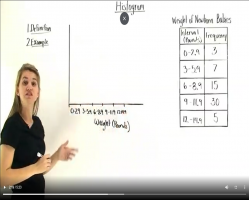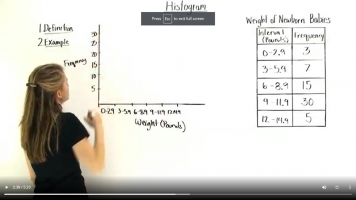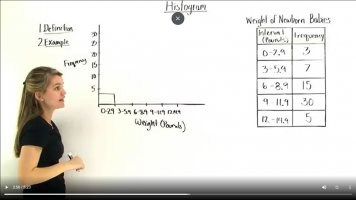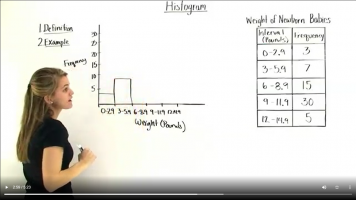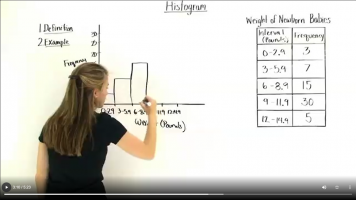eddy2017
Elite Member
- Joined
- Oct 27, 2017
- Messages
- 2,525
Hi, the following problem is from khan academy
Miguel tracked how much sleep he got for 50 consecutive days and made a histogram of the results.
Which interval contains the median sleep amount?
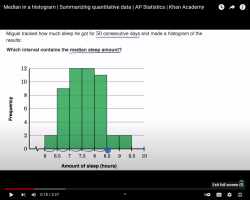
this is the histogram we have to find out which of those intervals at the bottom contains the median of sleep amount.
Dr Khan goes on to remind us how we find the median
and he does an example on the right hand side
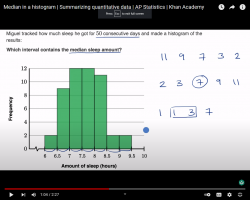
in this situatioin Miguel has an even number of data points
he goes on to explain that the median would be the mean of the 25th and 26th data points
I understand this perfectly well becuase I am fresh from doing a problem on the forum about tHIS
So, 25th and 26th would be t he two midlle data points
and then he asks: which intervla here contains the 25th and the 26th datapoints
then, he says : well, we can start at the bottom and let's take a look at each interval and find out how many data points it has;
and then he writes how many data points each interval has.
the first interval has 2
the second interval has 9
the third and fourth have 12 and so forth and so oon.
I am pasting a screenshot of that here.
my question is :
How does he know how many data points each interval has?. How does get every amount for every interval?.
I did not understand that.
Thanks for any help in advance and sorry for bringing this up in my other thread. I thought it had to do with the question at hand. My apologies.
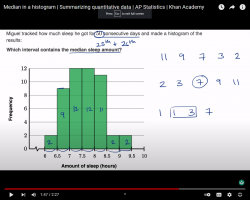
Miguel tracked how much sleep he got for 50 consecutive days and made a histogram of the results.
Which interval contains the median sleep amount?

this is the histogram we have to find out which of those intervals at the bottom contains the median of sleep amount.
Dr Khan goes on to remind us how we find the median
and he does an example on the right hand side

in this situatioin Miguel has an even number of data points
he goes on to explain that the median would be the mean of the 25th and 26th data points
I understand this perfectly well becuase I am fresh from doing a problem on the forum about tHIS
So, 25th and 26th would be t he two midlle data points
and then he asks: which intervla here contains the 25th and the 26th datapoints
then, he says : well, we can start at the bottom and let's take a look at each interval and find out how many data points it has;
and then he writes how many data points each interval has.
the first interval has 2
the second interval has 9
the third and fourth have 12 and so forth and so oon.
I am pasting a screenshot of that here.
my question is :
How does he know how many data points each interval has?. How does get every amount for every interval?.
I did not understand that.
Thanks for any help in advance and sorry for bringing this up in my other thread. I thought it had to do with the question at hand. My apologies.

Last edited:

